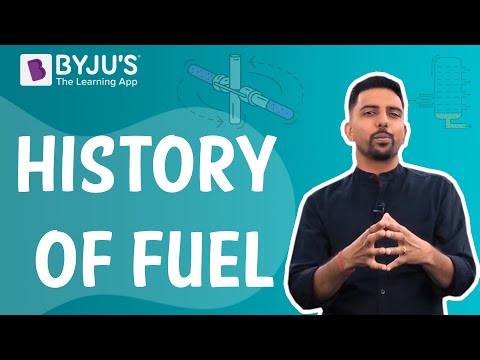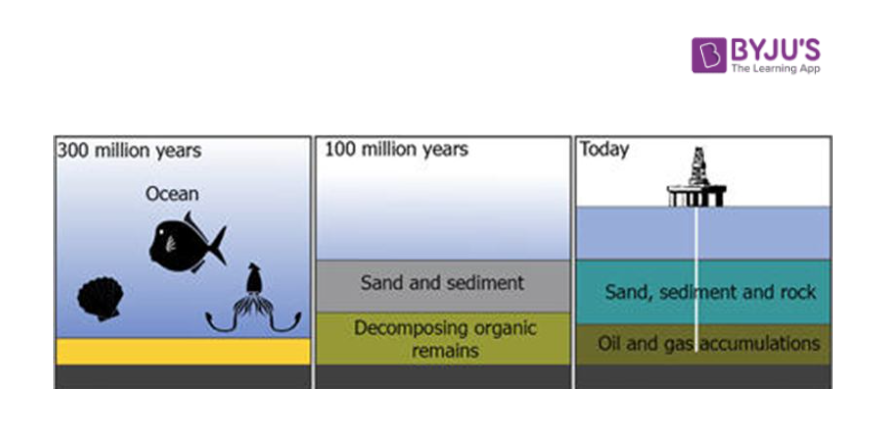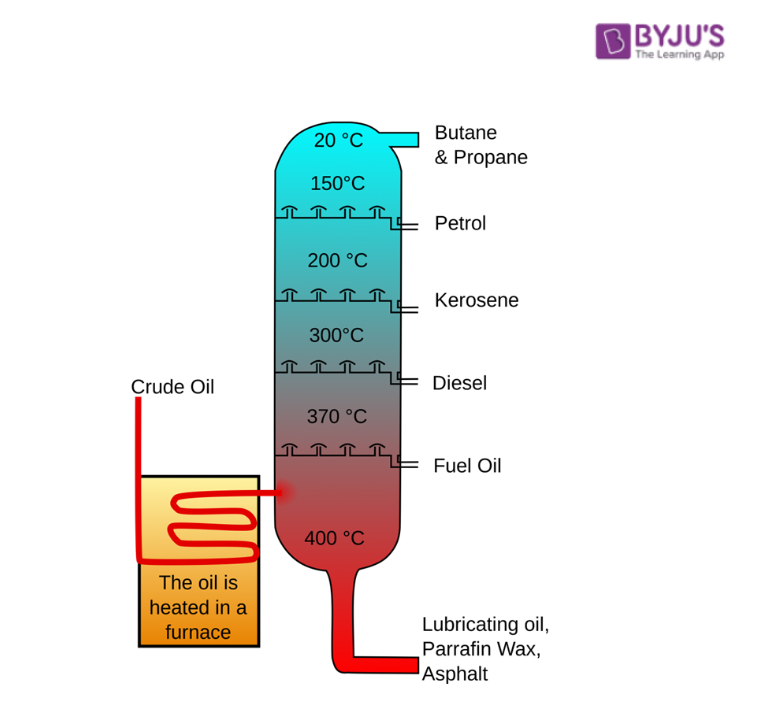What is Petroleum?
Petroleum is referred to as “Black Gold.” This name itself is an indication of its importance to humans. Crude oil is considered to be the “mother of all commodities” as it is used to manufacture various products such as pharmaceuticals, plastics, gasoline, synthetic fabrics, etc. Petroleum or oil has also been the world’s leading source of energy since the 1950s.
Petroleum is a liquid which occurs naturally in rock formations. This consists of a complex mixture of different molecular weights of hydrocarbons, plus other organic compounds. Some petroleum-produced chemical compounds are also obtained from other fossil fuels.
Petrochemicals are produced mainly at a few manufacturing sites around the world. Petroleum is also the raw material for many industrial products, including pharmaceuticals, solvents, fertilizers, pesticides, synthetic fragrances, and plastics.
Table of Contents
Petroleum Meaning
The word petroleum translates to “rock oil.” It is derived from the Greek word “petra” and the Latin word “oleum”. When it is drilled from the ground in the liquid form, it is called crude oil. Humans have known about its existence for 4000 years. However, the first time crude oil was pumped from the ground was 2500 years ago in China and the world’s first crude oil well was drilled in Pennsylvania, USA only in the year 1859.
Petroleum or mineral oil is India’s next biggest source of energy after coal. It supplies heat and lighting power, machinery lubricants, and raw materials for a variety of manufacturing industries. Petroleum refineries for synthetic textiles, fertilisers and numerous chemical industries act as a “nodal industry.” Most of India ‘s petroleum occurrences are associated with anticlines and fault traps in tertiary-age rock formations. It occurs in folding regions, anticlines, or domes, where oil is trapped in the unfolded crest.
Recommended Videos

How is Petroleum Formed?
-
-
-
- Petroleum is formed from the remains of dead plants and animals.
- When plants and animals die, they sink and settle on the seabed.
- Millions of years ago, these dead wildlife and vegetation decomposed and got mixed with sand and silt.
- Certain bacteria helped in the decomposition of this organic matter and caused some chemical changes.
- Matter consisting largely of carbon and hydrogen was left behind. However, as there is no sufficient oxygen at the bottom of the sea, the matter could not decompose completely.
- The partially decomposed matter remained on the seabed and eventually was covered with multiple layers of sand and silt.
- This burying took millions of years, and finally, due to high temperature and pressure, the organic matter decomposed completely and formed oil.
-
-

Petroleum-Refining
Petroleum refineries are very large industrial complexes involving a great many processing units and auxiliary installations such as utility units and storage tanks. That refinery has its own specific arrangement and combination of processes for refining largely dictated by the location of the refinery, the target products and the economic considerations.
An oil refinery or petroleum refining is an industrial manufacturing facility where crude oil is extracted and converted into more valuable goods, such as petroleum naphtha, gasoline, jet fuel, asphalt foundation, heating oil, petroleum kerosene, and liquefied gas. Oil refineries are usually huge, vast industrial facilities with extensive pipelines running throughout, holding fluid streams in between.
-
-
-
- Petroleum is a mixture of many substances such as gas, petrol, diesel, kerosene, lubricating oil, paraffin wax, etc.
- As these constituents serve different purposes, it is important to separate them, or in other words, refine the crude oil. This process of separation of various constituents of petroleum is called petroleum refining.
- This is done in oil refineries. It is a three-step process.
- The first step is separation where the crude oil is separated into various components through the distillation process. The heavier constituents remain settled at the bottom whereas lighter constituents rise up as vapour, or remain liquid.
- Next, these constituents, which are still quite heavy, are converted into gas, gasoline, and diesel. Thus, the next step is conversion.
- These have certain impurities, so the last step is treating, where they are treated to obtain pure forms of various products.
-
-
The oldest and most common way of separating things into different components (called fractions) is to do it using the boiling temperature differences. That process is known as fractional distillation. You essentially heat up crude oil, let it spray, then condense the vapour.
New methods, in a method called conversion, use Chemical processing on certain fractions to produce others. For example, chemical processing may split lengthier chains into shorter chains. This allows a refinery to convert diesel fuel into gasoline, depending on the gasoline demand.

In industry, the refining process is generally called the “downstream” sector, while the “upstream” sector is known as the raw crude oil output. The word downstream is synonymous with the idea of sending oil down the supply chain of a commodity to an oil refinery to be refined into petrol. The downstream phase also includes the actual sale of petroleum products to other companies , governments or private individuals.
Uses of Petroleum
Refined products obtained from crude oil have a number of uses.
-
-
-
- Liquefied Petroleum Gas or LPG is used in households as well as in the industry.
- Diesel and petrol are used as fuels for vehicles. Diesel is generally preferred for heavy motor vehicles.
- Petrol is also used as a solvent for dry cleaning, whereas diesel is also used to run electric generators.
- Kerosene is used as a fuel for stoves and jet planes.
- Lubricating oil reduces wear and tear and corrosion of machines.
- Paraffin wax is used to make candles, ointments, ink, crayons, etc.
- Bitumen or asphalt is mainly used to surface roads.
-
-
Frequently Asked Questions – FAQs
How is petroleum refined?
Petroleum refining or oil refining is an automated procedure that removes crude oil from the earth and converts it into usable items such as liquefied petroleum gas ( LPG), kerosene, asphalt foundation, jet fuel, diesel, heating oil, cooking oils, etc.
What does a petroleum refinery do?
Petroleum refineries convert crude oil into petroleum products for use as fuel for shipping, cooking, paving roads and electricity production and as feedstocks for chemical manufacturing. The refining cycle breaks down crude oil into its different components and is then gradually reconfigured into new products.
What is petroleum and its uses?
Petroleum products include aviation fuels, heating and electricity-generating fuel oils, asphalt and road tar, and feedstocks for producing the additives, plastics, and industrial materials that are in almost everything we use.
How is coal and petroleum formed?
Coal and petroleum are produced as a result of the destruction of the old plant life that existed millions of years ago. This dead plant matter started building up and finally developed a material called peat. Over time these materials were transformed into coal by heat and pressure from geological processes.
What is the chemical formula of petrol?
For petrol the basic chemical formula is CnH2n+2. This formula applies to alkanes, and because it contains different chemicals, the chemical formula for petrol can be changed.
How is petroleum refined?
Petroleum refining or oil refining is an industrial process that extracts crude oil from the earth and converts it into useful items such as liquefied petroleum gas ( LPG), kerosene, asphalt base, jet fuel, diesel, heating oil, fuel oils, etc.
What is the main purpose of petroleum refining?
Petroleum refining is mainly aimed at transforming crude oil into useful goods such as LPG, gasoline, jet fuel, diesel oil, jet fuel and fuel oils.
Where is petroleum found?
Today petroleum is found in vast underground reservoirs where there were ancient seas. Petroleum reserves can be located beneath the land, or under the ocean. They extract their crude oil using giant drilling machines.
What are examples of petroleum products?
Petroleum products which are covered by the Oil Spill Law are commonly used for home heating and power engine energy. Types of petroleum products include kerosene, gasoline, home heating oil, and jet fuel.
How is petroleum used?
Petroleum products include transportation fuels, heating and electricity-generating fuel oils, asphalt and road oil, and feedstocks for producing the chemicals, plastics, and synthetic materials that are in almost everything we use.
To know more about petroleum and other fossil fuels, download BYJU’S – The Learning App.



This would help me
It really helped me in making my notes.
Thank you ,Byju’s .
whatnare the components of petroleum ?
The typical components of petroleum are carbon, hydrogen, nitrogen, oxygen, and sulfur. It also can contain trace amounts of other metals.
What are the byproducts of petroleum
Gasoline, Diesel fuel, Liquefied Petroleum Gas (LPG) fuel oil. Kerosene, Asphalt (mainly used in asphalt concrete), Paraffin wax and Tar.